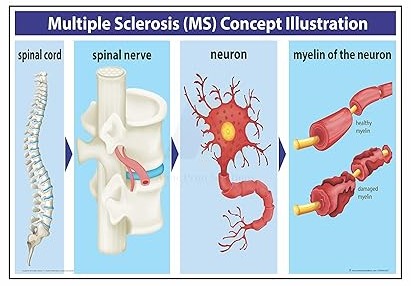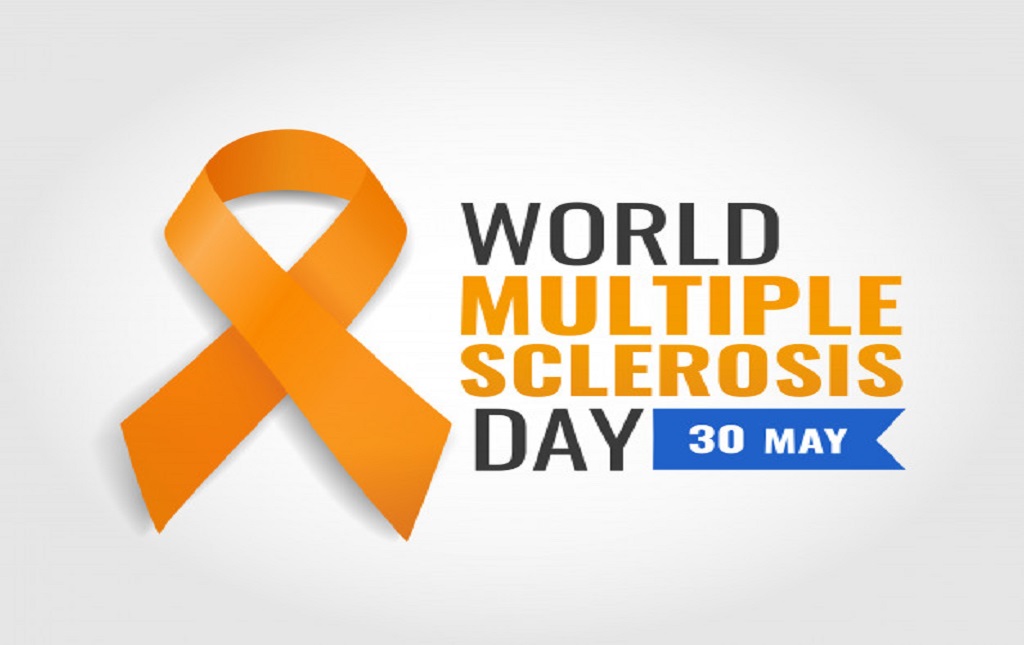After Alzheimer’s, Epilepsy, and Cerebral palsy, one of the most common diseases of the central nervous system is Multiple Sclerosis. MS affects the brain and the spinal cord.
Right now, across the globe, about 2.8 Million people will have multiple sclerosis.
Table of Contents
WORLD SCLEROSIS DAY
30th May of each year marks World Sclerosis Day. Many activities are conducted to spread awareness about the same.
The day was initiated by the MS International Federation (MSIF) and now it is globally accepted. It raises awareness and builds a community of people suffering from MS.
THEME FOR 2024
Theme- DIAGONINS
Campaign name- My MS diagnosis
Tagline- Navigating MS Together
This campaign aims to provide better, more accurate, and early diagnosis. All of this is done by sharing the patient stories from across the globe.
But what is Multiple sclerosis? Let us learn more about MS and the attributes related to it.
WHAT IS MULTIPLE SCLEROSIS?
It is an inflammatory demyelinating condition. A demyelinating condition is a circumstance where the protective covering of the nerve fibers gets damaged.
MS can also be categorized as an autoimmune disorder, where the immune system cannot differentiate between the body’s cells and foreign cells. Hence, inflammatory demyelinating is when the body’s immune system inflates and attacks the healthy cells of the body.
In the case of MS, the myelin- which is a fatty material acting as an insulator to the nerves- is attacked by the immune system, and a covering is formed around it, damaging the myelin.

PROBLEMS WITH THE LOSS OF MEYLIN
While myelin is the protective layer around the nerves in the brain and the spinal cord, it also acts as a transmitter of electrical impulses of the nervous system.
When damaged, it hinders the transfer of impulses from the brain to the body or vice-versa.
CAUSES OF MULTIPLE SCLEROSIS
There is no solid information on what leads to the diseases, but researchers believe it to be genetic or environmental.
Genetic
MS is a hereditary disease, but it might be affected by genes. There have been rare cases of it being found in blood relatives. Even in the case of identical twins, the chances of both twins having the disease is about 20-30%.
There is a severe need for more research and information as to what genes affect MS so that we immune ourselves better to the disease.
Environmental
There is more information concerning the environmental factors affecting MS.
Research shows that low vitamin D is one of the causes of MS. which automatically means that people living near the equator are at reduced risk.
Age also plays a key role here. If a child is moved from one part of the world to another, the child can be at risk of MS, due to the pungent change in the environment.
Smoking is also one of the strongly believed causes of the disease.
SYMPTOMS
Symptoms differ for everyone, based on the affected area and the severity of it. While there is no solid list, a few are noted as the most common symptoms. These can be divided into 2 categories, namely- Evident symptoms and Hidden symptoms
Evident symptoms
Bladder and bowel issues
Sexual dysfunction
Movement and coordination problems
Visual problems
Cognition and emotional changes.
Hidden symptoms
Fatigue
Altered sensations: sensations of burning, tingling, numbness, etc.
Memory and concentration problems
DIAGNOSIS
As the symptoms are varied and difficult to identify, only a clinical diagnosis can give assurity of the disease.
After regularity in symptoms, the doctor will have to conduct tests such as Neurological examination, Magnetic resonance imaging (MRI), Evoked potentials, and Lumbar puncture, for proper results.
TREATMENT
There is no guaranteed cure for MS. One can only try to control the disease, and to do that one can take up-drug treatments, medications, therapies, healthy diet, exercises, and rehabilitation. All these need to be moderated and done under the supervision of a doctor.
There is an urgent need for a cure and researchers across the globe are working towards the same.

SOCIETAL IMPACT
It is believed that a disease not only brings down the patient but also negatively affects the surroundings of the diseased.
Multiple sclerosis is also the cause of societal issues on various fronts. It affects the economic, cultural, and societal structure of the patients and the people around them.
Cultural impact
Where the patient is from also affects the severity of MS. Evidence shows that Hispanic and Latinx populations have higher disability or symptom scores than Caucasians or African Americans. The place of origin and genetic resilience affect the severity of MS.
Economic impact
The treatment needs to be constant, therefore, in low or middle-income families, it causes a heavy monetary burden. If not treated well, an increase in severity just increases the cost of treatment.
Societal impact
Going through MS is psychologically and mentally challenging for the patients and the family and friends around. Triggering anxiety, depression, increasing difficulty in working, reducing the strength to focus, and more.
Fighting a disease like MS is a unified effort. While the patient needs to be strong, so do the people around. The researchers are doing their part by finding a cure. We as commoners, being well educated and considerate towards the disease and patient play our part in this eco-system. This is a fight against a common enemy.



